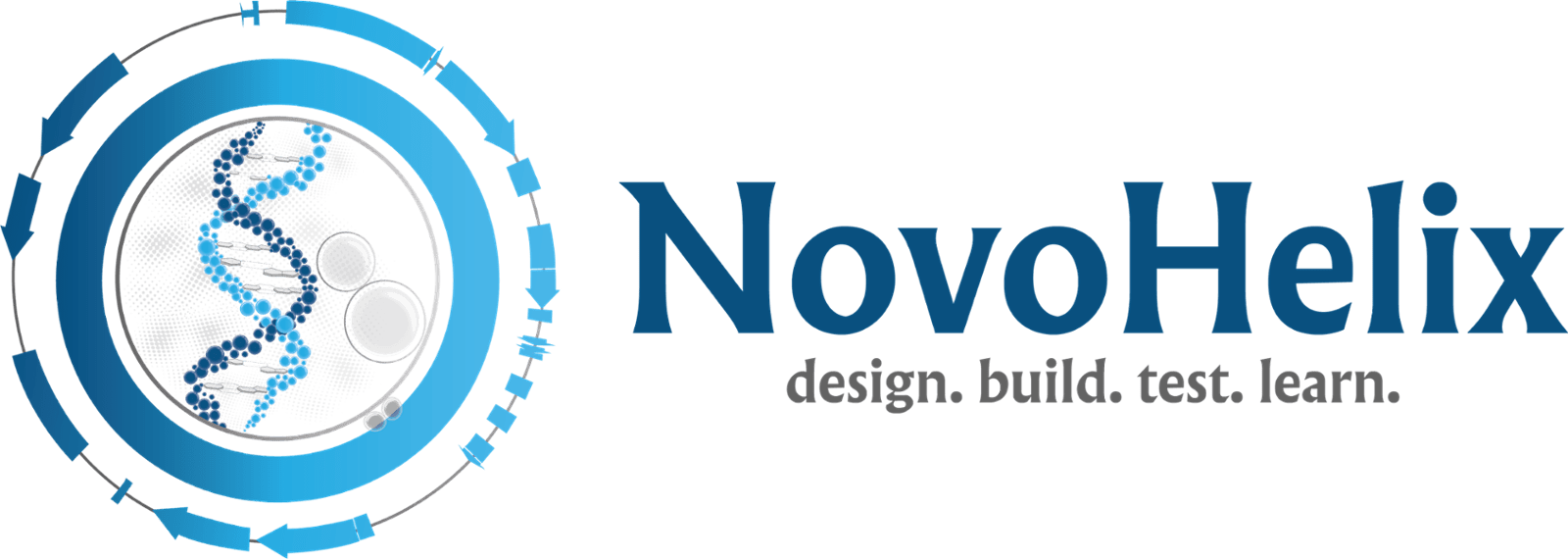Stem-Molecule — Y27632
Product
Catalog Nr
Size
Concentration
Pricing
Y27632
D9276B
bulk
Want to try this product? Request a sample of Y27632.
Product Information
Product Literature & Protocol
FAQs & Troubleshooting
References
Supporting Documents
Product Information
Applications:
- Improved single-cell passaging of human pluripotent stem cells by 25%
- Generation of reprogrammed human induced pluripotent stem cells
- Derivation of nascent ES cell lines from epiblast/ICM from human embryos
- Component of naïve human pluripotent stem cell media including t2iLGöY & m5i/LAF media
Source:
This product is manufactured in the USA using chemically-defined components and, therefore, does not contain manufacturing components such as serum or animal-derived raw materials.
Target:
Y27632 showed highly selective inhibition of ROCK activity with half the maximal inhibitory concentration (IC50) of Y27632 for ROCK1 is 220 nM and for ROCK2 is 300 nM.
Purity:
>99 %. FTIR (Fourier Transform Infrared Spectroscopy) analysis was used to compare peaks in infrared spectrum with those of a known standard to determine trace impurities.
Technical Information:
| Molecular Weight | 320.26 g/mol |
| Solubility |
- Ethanol — soluble to 5 mg/mL or ~15.6 mM - aqueous buffers† — soluble to 10 mg/mL or ~31.2 mM in PBS, pH 7.2 †Use immediately, do not store for longer than 24h |
| CAS Number | 146986-50-7 |
| PubChem ID | 9901617 |
| IUPAC Name | 4-[(1R)-1-aminoethyl]-N-pyridin-4-ylcyclohexane-1-carboxamide;dihydrochloride |
| Formula | C14H21N3O•2HCl |
| λmax | 270 nm |
| SMILES | O=C([C@H]1CC[C@@]([C@H](N)C)([H])CC1)NC2=CC=NC=C2.Cl.Cl |
| InChi Code | InChI=1S/C14H21N3O.2ClH/c1-10(15)11-2-4-12(5-3-11)14(18)17-13-6-8-16-9-7-13;;/h6-12H,2-5,15H2,1H3,(H,16,17,18);2*1H/t10-,11?,12?;;/m1../s1 |
Storage/Stability:
Stock solutions of Y27632 in its concentrated form can be stored at least 6 months at -20°C and at least 12 months at -80°C from the date of manufacture with no loss of activity. For long term storage, avoid repeated freeze-thaw cycles by aliquoting. Multiple freeze-thaw cycles reduce potency and, therefore, aliquoting working stocks is strongly recommended. Y27632 is unstable in aqueous buffers and should not be stored longer than 24 hours, use immediately.†
Appearance:
A sterile, aqueous, clear and colorless solution.
Formulation:
Y27632 is supplied at 25 mg/ml in the excipient DMSO. The reconstituted solution has been filter sterilized by passing through a 0.22 micron PES membrane and tested to be negative for mycoplasma contamination.
Disclaimer & Precautions:
This product is solely for research and development use only and may be subject to conditional use and licensing restrictions. The product shall not be used as an advanced pharmaceutical intermediate (API) or investigational drug or a biologic. This product is not intended to be used as a therapeutic agent or facilitate clinical diagnosis or be used as an in vitro diagnostic (IVD) product.
The Food and Drug Administration (FDA) and Center for Biologics Evaluation and Research (CBER) define an IVD as:
“In vitro diagnostic products are those reagents, instruments, and systems intended for use in the diagnosis of disease or other conditions, including a determination of the state of health, in order to cure, mitigate, treat, or prevent disease or its sequelae. Such products are intended for use in the collection, preparation, and examination of specimens taken from the human body. These products are devices as defined in section 201(h)of the Federal Food, Drug, and Cosmetic Act (the act), and may also be biological products subject to section 351 of the Public Health Service Act. Title 21, Code of Federal Regulations (CFR), section 809.3(a).”
This product shall not be used or formulated in any agricultural, pesticidal, veterinary or animal products, food additives or household chemicals or any other unspecified use. Please consult the Safety Data Sheet for information regarding hazards and safe handling practices. NovoHelix distributes products for basic and translational research use only. NovoHelix will report any unspecified use to respective regulatory authorities for enforcement to ensure safeguarding of our research products from potential abuse.
Notice to purchaser:
The purchase price of this product includes a limited, non-transferable license under U.S. and foreign patents or applications owned by NovoHelix to use this product. No other license under these patents or applications is conveyed expressly or by implication by purchase of this product.
Product Literature & Protocol
- HiFi DNA Assembly Protocol
Recommended Amount of Fragments Used for Assembly
| 2–3 Fragment Assembly* | 4–6 Fragment Assembly** | Positive Control✝ | |
| Recommended DNA Molar Ratio | vector:insert = 1:2 | vector:insert = 1:1 | |
| Total Amount of Fragments | 0.03–0.2 pmols* X μl | 0.2–0.5 pmols** X μl | 10 μl |
NovoHelix HiFi DNA Assembly Master Mix | 10 μl | 10 μl | 10 μl |
| Deionized H2O | 10-X μl | 10-X μl | 0 |
| Total Volume | 20 μl✝✝ | 20 μl✝✝ | 20 μl |
* Optimized cloning efficiency is 50–100 ng of vector with 2-fold excess of inserts.
Use 5 times more insert if size is less than 200 bp. Total volume of unpurified PCR fragments in the assembly reaction should not exceed 20%.
**To achieve optimal assembly efficiency, design ≥ 20 bp overlap regions between each fragment with equimolarity (suggested: 0.05 pmol each).
† Control reagents are provided for 5 experiments.
†† If greater numbers of fragments are assembled, increase the volume of the reaction linearly by using additional NovoHelix HiFi DNA Assembly Master Mix. Alternatively, pool the DNA fragments into an equimolar mix first and then re-purify these pooled equimolar fragments over a micro-column and elute with a minimum volume (~10-µl). The eluate may be reapplied to the same micro-column membrane to improve elution of large DNA fragments without increasing the final volume..
Recommended Storage Condition:
This assembly mixture can be stored at -20 °C for at least one year. The enzymes remain active following at least 10 freeze-thaw cycles.
FAQs & Troubleshooting
References
Watanabe K, Ueno M, Kamiya D, Nishiyama A, Matsumura M, Wataya T, Takahashi JB, Nishikawa S, Nishikawa S, Muguruma K, Sasai Y. A ROCK inhibitor permits survival of dissociated human embryonic stem cells. Nat Biotechnol. 2007 Jun;25(6):681-6. Epub 2007 May 27. PubMed PMID: 17529971.
Ichikawa H, Kanoh Y, Shirasawa S, Yokoyama T, Yue F, Tomotsune D, Sasaki K. Unique kinetics of Oct3/4 microlocalization following dissociation of human embryonic stem cell colonies. Ann Anat. 2013 Jan;195(1):50-6. doi: 10.1016/j.aanat.2012.05.004. Epub 2012 Jun 5. PubMed PMID: 22727933.
Kurosawa H. Application of Rho-associated protein kinase (ROCK) inhibitor to human pluripotent stem cells. J Biosci Bioeng. 2012 Dec;114(6):577-81. doi: 10.1016/j.jbiosc.2012.07.013. Epub 2012 Aug 13. Review. PubMed PMID: 22898436.
Andrews PD, Becroft M, Aspegren A, Gilmour J, James MJ, McRae S, Kime R, Allcock RW, Abraham A, Jiang Z, Strehl R, Mountford JC, Milligan G, Houslay MD, Adams DR, Frearson JA. High-content screening of feeder-free human embryonic stem cells to identify pro-survival small molecules. Biochem J. 2010 Nov 15;432(1):21-33. doi: 10.1042/BJ20101022. PubMed PMID: 20854259.
De Los Angeles A, Loh YH, Tesar PJ, Daley GQ. Accessing naïve human pluripotency. Curr Opin Genet Dev. 2012 Jun;22(3):272-82. doi: 10.1016/j.gde.2012.03.001. Epub 2012 Mar 29. Review. PubMed PMID: 22463982; PubMed Central PMCID: PMC4171054.
Kuo HH, Gao X, DeKeyser JM, Fetterman KA, Pinheiro EA, Weddle CJ, Fonoudi H, Orman MV, Romero-Tejeda M, Jouni M, Blancard M, Magdy T, Epting CL, George AL Jr, Burridge PW. Negligible-Cost and Weekend-Free Chemically Defined Human iPSC Culture. Stem Cell Reports. 2020 Jan 9. pii: S2213-6711(19)30446-1. doi: 10.1016/j.stemcr.2019.12.007. [Epub ahead of print] PubMed PMID: 31928950.
Yasuda SY, Ikeda T, Shahsavarani H, Yoshida N, Nayer B, Hino M, Vartak-Sharma N, Suemori H, Hasegawa K. Chemically defined and growth-factor-free culture system for the expansion and derivation of human pluripotent stem cells. Nat Biomed Eng. 2018 Mar;2(3):173-182. doi: 10.1038/s41551-018-0200-7. Epub 2018 Mar 5. PubMed PMID: 31015717.
Chen G, Gulbranson DR, Hou Z, Bolin JM, Ruotti V, Probasco MD, Smuga-Otto K, Howden SE, Diol NR, Propson NE, Wagner R, Lee GO, Antosiewicz-Bourget J, Teng JM, Thomson JA. Chemically defined conditions for human iPSC derivation and culture. Nat Methods. 2011 May;8(5):424-9. doi: 10.1038/nmeth.1593. Epub 2011 Apr 10. PubMed PMID: 21478862; PubMed Central PMCID: PMC3084903.
Pijuan-Galitó S, Tamm C, Schuster J, Sobol M, Forsberg L, Merry CL, Annerén C. Human serum-derived protein removes the need for coating in defined human pluripotent stem cell culture. Nat Commun. 2016 Jul 13;7:12170. doi: 10.1038/ncomms12170. PubMed PMID: 27405751; PubMed Central PMCID: PMC4947164.
Supporting Documents

